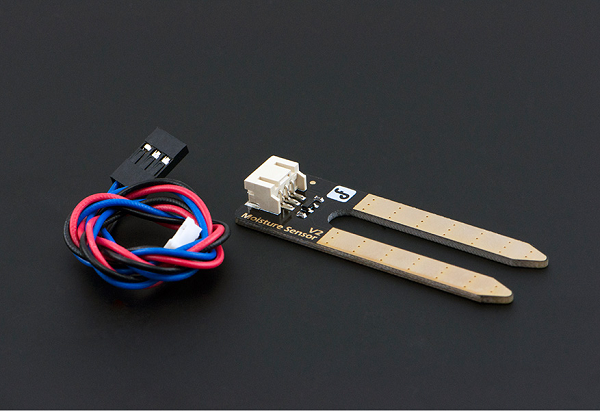3핀(신호선, 전원선)으로 구성된 수분 측정 센서입니다. 3.3V 또는 5V를 입력하여 작동시킬 수 있으며
수분의 정도를 아날로그 신호로 출력해줍니다. 사용방법 및 코드는 아래의 Wiki 링크 혹은
메카솔루션 네이버 블로그에 '수분센서'를 검색해주세요.

The new soil moisture sensor uses Immersion Gold which protects the nickel from oxidation. Electroless nickel immersion gold (ENIG) has several advantages over more conventional (and cheaper) surface platings such as HASL (solder), including excellent surface planarity (particularly helpful for PCB's with large BGA packages), good oxidation resistance, and usability for untreated contact surfaces such as membrane switches and contact points.
A soil moisture sensor can read the amount of moisture present in the soil surrounding it. It's a low tech sensor, but ideal for monitoring an urban garden, or your pet plant's water level. This is a must have tool for a connected garden!
This sensor uses the two probes to pass current through the soil, and then it reads that resistance to get the moisture level. More water makes the soil conduct electricity more easily (less resistance), while dry soil conducts electricity poorly (more resistance).
This sensor will be helpful to remind you to water your indoor plants or to monitor the soil moisture in your garden. The IO Expansion Shield is the perfect shield to connect this senor to Arduino.
- Power supply: 3.3v or 5v
- Output voltage signal: 0~4.2v
- Current: 35mA
- Pin definition:
- Analog output(Blue wire)
- GND(Black wire)
- Power(Red wire)
- Size: 60x20x5mm(2.36x0.79x0.2")
- Surface finish:Immersion Gold
- Moisture sensor x1
- Analog Sensor Cable x1
응용 예제 (Application Examples) :